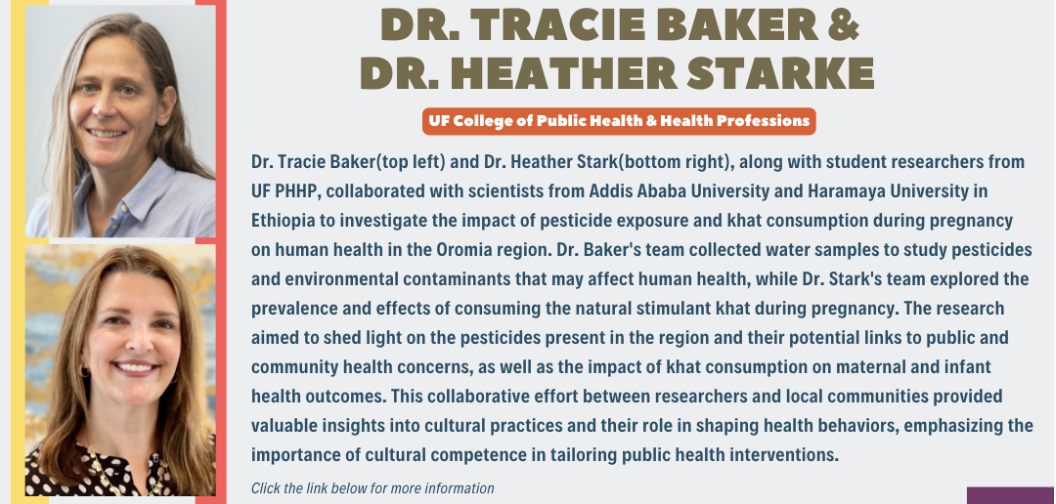Photo: CAS News Bulletin
PHHP researchers collaborate with Ethiopian universities on studies of pesticide exposure and maternal health
Source: UF College of Public Health & Health Professions
By Katarina Fiorentino Klatzkow

PHHP researchers and students are collaborating to advance health on a global scale
Pesticides are a common protection measure to ward off crop infestation, protect homes from invasive species, and mitigate the spread of germs and bacteria. But what happens when pesticides, and other environmental toxins and chemicals, are ingested by humans in the water we drink and the food we eat? And what could the role of a commonly consumed crop, which may contain some of these pesticides, play in the health outcomes of vulnerable populations?
Tracie Baker, Ph.D., D.M.V., an associate professor in the University of Florida College of Public Health and Health Professions department of environmental and global health, and Heather Stark, M.D., M.P.H., a clinical associate professor in the department of epidemiology and program director of the Master of Science in epidemiology, recently traveled to the Oromia region of Ethiopia with student researchers from the college to help answer these questions.
In partnership with scientists from Addis Ababa University and Haramaya University, Baker’s team collected water samples to study pesticides and environmental contaminants that may be impacting human health, while Stark’s team organized focus groups and administered surveys to gain insights into the prevalence and impact of consuming a natural stimulant known as khat during pregnancy.
Problematic pesticides
One of Baker’s primary research interests is transgenerational, environmentally induced disease.
In Oromia, researchers and medical professionals have noticed higher incidences of stunting, liver disease and developmental disorders, which rang alarm bells for Baker — could pesticides be a culprit?
Through funding from theUF International Center, Baker’s research aims to shed light on what pesticides are present in the region and any possible links to public and community health concerns.
“Pesticides have the tendency to bioaccumulate up the food chain, with bigger fish eating smaller fish, and then (the contaminants) making it up to large birds, mammals and people,” said Baker, a member of UF’s Emerging Pathogens Institute. “We want to get an idea of the pesticides present in this region and in what concentrations.”
To read more, click here

